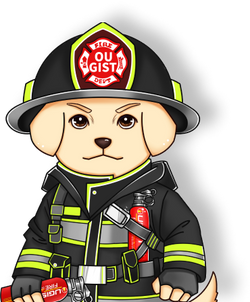Fire blankets are invaluable tools in fire safety, designed to extinguish small, contained fires effectively. These versatile safety devices are suitable for various fire scenarios, making them an essential addition to any home, workplace, or laboratory. In this blog post, we will explore the different types of fires that fire blankets can handle and the importance of having them readily available in fire emergency preparedness.

Class A Fires:
Class A fires involve ordinary combustible materials, such as wood, paper, cloth, plastics, and rubber. These fires are common in homes and workplaces and can escalate quickly. Fire blankets are highly effective in smothering Class A fires by cutting off the fire's oxygen supply and preventing it from spreading further.
Class B Fires:
Class B fires involve flammable liquids and gases, such as gasoline, oil, grease, and alcohol. These fires can be challenging to extinguish with water alone, as water may spread the flames. Fire blankets, however, offer a safe and effective solution to suppress Class B fires by smothering the flames and preventing re-ignition.
Class C Fires:
Class C fires involve energized electrical equipment, such as electrical appliances, wiring, and outlets. Using water or traditional fire extinguishers on these fires can be hazardous due to the risk of electrical shock. Fire blankets, on the other hand, are non-conductive and can be safely used on Class C fires to suffocate the flames without endangering the user.
Class F Fires:
Class F fires involve cooking oils and fats, commonly found in kitchen environments. These fires can ignite quickly and spread rapidly, posing significant risks to both property and individuals. Fire blankets are ideal for tackling Class F fires, as they can be effortlessly placed over the burning pan or pot, instantly extinguishing the fire and preventing dangerous flare-ups.
Clothing Fires:
Clothing fires can occur due to accidents, sparks, or contact with open flames. In such situations, quick action is crucial to preventing severe burns and injuries. Fire blankets can be wrapped around a person whose clothes are on fire, effectively smothering the flames and providing immediate relief and protection.
Laboratory Fires:
Laboratories often handle flammable chemicals, solvents, and substances that pose a fire hazard. In case of a minor fire, fire blankets can be used to suppress the flames without the risk of chemical reactions or toxic fumes that may result from using other types of extinguishing agents.

In Conclusion:
Fire blankets are indispensable tools in fire safety, capable of tackling various types of fires commonly encountered in homes, workplaces, and laboratories. Their versatility, ease of use, and effectiveness in suppressing flames make them a crucial addition to any fire emergency preparedness plan. Whether it's a Class A, B, C, or F fire, or a clothing fire, having a fire blanket readily accessible empowers individuals to take swift action and protect lives and property in the face of a fire emergency.


